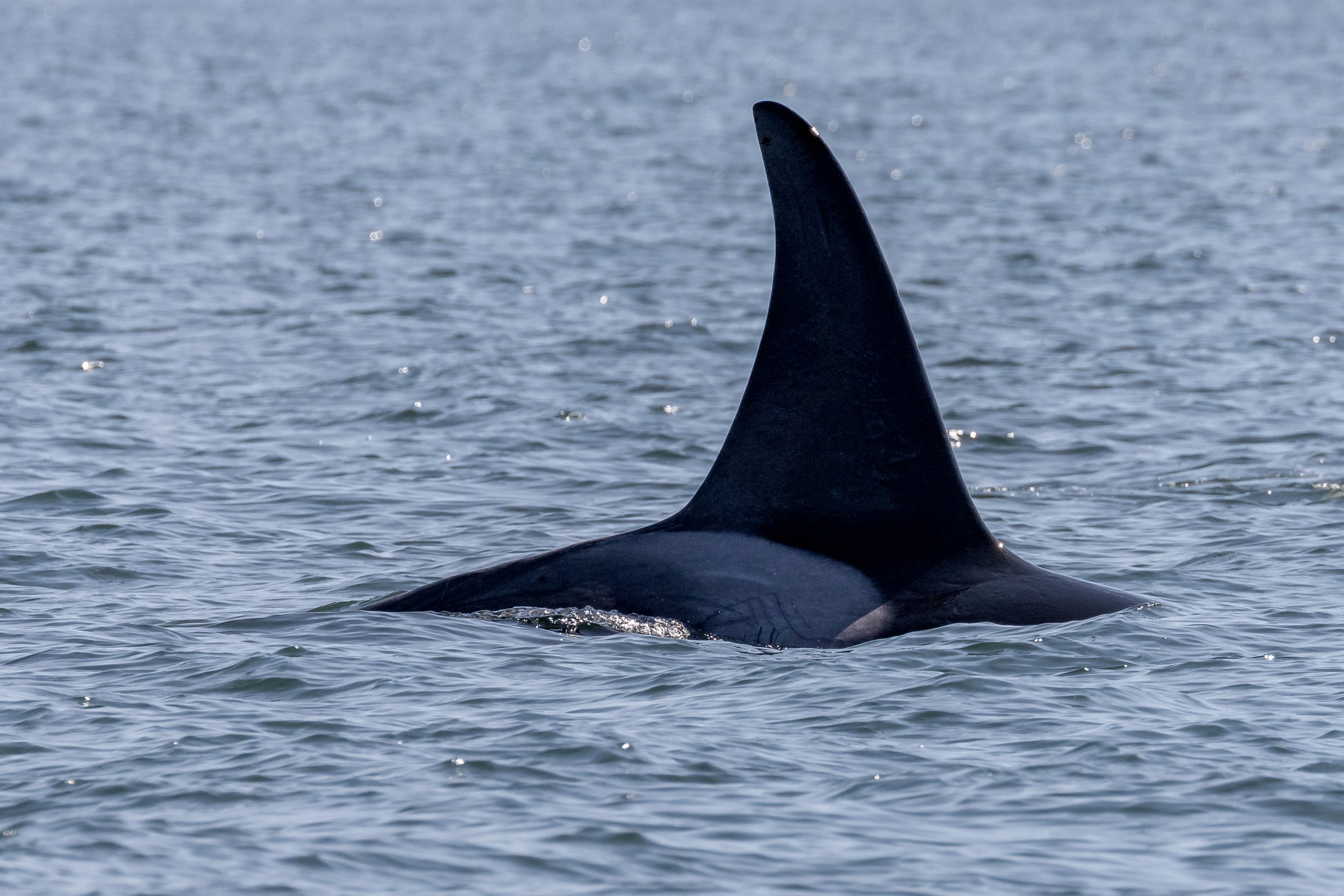July 14, 2023, 3:30 - The T049As (- Noah and Jude) and Slice the Humpback!
Another double species day in the books! We headed out into the Strait of Georgia towards an older report of orca not too far from Nanaimo. We headed up there in hopes of picking them up again! We had our eyes peeled, looking for the distinct black dorsal fins cutting through the water and the puff of the blows as they come to the surface to breathe. Soon the blows caught our eye and we headed over to discover the T049As travelling together.
T049A Nan ♀ (1986)
T049A3 Nat ♂ (2011)
T049A4 Neptune ♂ (2014)
T049A5 Nebula ♀ (2017)
T049A6 (2022)
Today these whales were just sleepily travelling through the water, nice and close together, meaning that they were likely sleeping. In whales sleeping is an interesting behaviour to observe since they don’t do it the same way that we do. Instead of shutting their brain down for extended periods of time as we see in humans, they have to only rest half of their brain at a time. This is because whales have to think about breathing unlike humans where it happens automatically. If they shut off their whole brain they would end up suffocating since they wouldn’t be exchanging oxygen anymore.
Although you won’t get some of the more active surfacing activity when they’re resting like you might if they were hunting, there tends to be much more surface time as they surface to breathe and they will all be closer together.
After our time with the T049As was over we started to head south again, searching for other wildlife! We once again spotted a blow in the distance and approached this time to see the small lumpy dorsal fin of a humpback whale. This whale didn't give us a clear photo of the underside of the tail flukes while we were watching it, but luckily it was a very distinct dorsal fin, and we recognized it as Slice (Divot’s 2021 calf)!
This youngster was found close to Halibut Bank where we guessed they were doing feeding dives. Here in BC a lot of our feeding activity happens beneath the surface, so it can be hard to know for sure.
Photos taken by Marine Naturalist Vanessa Vereschahen.
T049A5 Nebula and T049A Nan travelling together.
T049A3 Nat with his large dorsal fin.
Can you see the tell tale markings on T049A Nan’s dorsal fins at the bottom?
T049A4 Neptune beside his sister T049A5 Nebula.
T049A3 Nat showing off his Saddle Patch.
The other side of T049A3 Nat.
T049A Nan followed T049A6.
T049A Nan in behind T049A4 Neptune.
T049A6. Look at all those scars!
T049A6 with the lovely swooping scars near their eye patch. Followed by T049A4 Neptune and T049A5 Nebula.
T049A Nan is in the lead followed by T049A6 and T049A5 Nebula.
T049A6 is so cute!
T049A3 Nat in front of T049A5 Nebula.
T049A Nan travelling closely with her most recent calf T049A6.
T049A4 Neptune travelling through the water.
The T049As surfacing together. T049A4 Neptune in the back, with T049A Nan in front and T049A6 breaking the surface.
Slice near Halibut bank with a little harbour porpoise in the background.
Another porpoise.
Slice going for a dive.
The distinct dorsal fin of Slice.
Slice going for a dive.
You can see scarring left behind by barnacles on his fluke.
The other side of Slices dorsal fin.
Steller Sea Lions hauled out on Halibut Bank.
A sleepy Steller Sea Lion.
A cormorant on a dead tree near the Gabriola Bluffs.
Look at all the Cormorants on the rocks.
An adult and a juvenile cormorant.
One of the Bald Eagles on the nest tree.
An adult Bald Eagle overhead.
A fluffy bald eagle.































